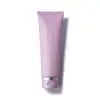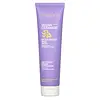What's inside
What's inside
 Key Ingredients
Key Ingredients

 Benefits
Benefits

 Concerns
Concerns

No concerns
 Ingredients Side-by-side
Ingredients Side-by-side

Water
Skin ConditioningCaprylic/Capric Triglyceride
MaskingGlycerin
HumectantPolyglyceryl-3 Methylglucose Distearate
EmulsifyingPropanediol
SolventGlyceryl Stearate
EmollientCetearyl Alcohol
EmollientXylitylglucoside
HumectantBetaine
HumectantPhospholipids
Skin ConditioningLinoleic Acid
CleansingGlycine Soja Sterols
EmollientCeramide NP
Skin ConditioningCeramide AP
Skin ConditioningCeramide EOP
Skin ConditioningPhytosphingosine
Skin ConditioningCholesterol
EmollientAloe Barbadensis Leaf Juice
Skin ConditioningTasmannia Lanceolata Fruit/Leaf Extract
AntioxidantCucumis Sativus Seed Oil
EmollientEctoin
Skin ConditioningHydroxyectoin
BufferingSodium Lauroyl Lactylate
EmulsifyingZingiber Officinale Root Extract
MaskingBisabolol
MaskingTocopherol
AntioxidantRosmarinus Officinalis Leaf Extract
AntimicrobialCarbomer
Emulsion StabilisingAnhydroxylitol
HumectantOryza Sativa Bran Extract
Skin Conditioning1,2-Hexanediol
Skin ConditioningStearic Acid
CleansingSodium Lauroyl Glutamate
Saccharide Isomerate
HumectantXylitol
HumectantTrisodium Ethylenediamine Disuccinate
Caprylhydroxamic Acid
Helianthus Annuus Seed Oil
EmollientXanthan Gum
EmulsifyingCitric Acid
BufferingSodium Citrate
BufferingWater, Caprylic/Capric Triglyceride, Glycerin, Polyglyceryl-3 Methylglucose Distearate, Propanediol, Glyceryl Stearate, Cetearyl Alcohol, Xylitylglucoside, Betaine, Phospholipids, Linoleic Acid, Glycine Soja Sterols, Ceramide NP, Ceramide AP, Ceramide EOP, Phytosphingosine, Cholesterol, Aloe Barbadensis Leaf Juice, Tasmannia Lanceolata Fruit/Leaf Extract, Cucumis Sativus Seed Oil, Ectoin, Hydroxyectoin, Sodium Lauroyl Lactylate, Zingiber Officinale Root Extract, Bisabolol, Tocopherol, Rosmarinus Officinalis Leaf Extract, Carbomer, Anhydroxylitol, Oryza Sativa Bran Extract, 1,2-Hexanediol, Stearic Acid, Sodium Lauroyl Glutamate, Saccharide Isomerate, Xylitol, Trisodium Ethylenediamine Disuccinate, Caprylhydroxamic Acid, Helianthus Annuus Seed Oil, Xanthan Gum, Citric Acid, Sodium Citrate
Water
Skin ConditioningSodium Cocoyl Glutamate
CleansingDisodium Cocoyl Glutamate
CleansingHydroxypropyl Starch Phosphate
Coco-Glucoside
CleansingGlycol Distearate
EmollientGlycerin
HumectantCeramide NP
Skin ConditioningCeramide AP
Skin ConditioningCeramide EOP
Skin ConditioningPhytosphingosine
Skin ConditioningCholesterol
EmollientSodium Lauroyl Lactylate
EmulsifyingXanthan Gum
EmulsifyingAlthaea Officinalis Leaf/Root Extract
EmollientCalendula Officinalis Flower Extract
MaskingArginine
MaskingSerine
MaskingThreonine
Decyl Glucoside
CleansingPhenoxyethanol
PreservativeEthylhexylglycerin
Skin ConditioningWater, Sodium Cocoyl Glutamate, Disodium Cocoyl Glutamate, Hydroxypropyl Starch Phosphate, Coco-Glucoside, Glycol Distearate, Glycerin, Ceramide NP, Ceramide AP, Ceramide EOP, Phytosphingosine, Cholesterol, Sodium Lauroyl Lactylate, Xanthan Gum, Althaea Officinalis Leaf/Root Extract, Calendula Officinalis Flower Extract, Arginine, Serine, Threonine, Decyl Glucoside, Phenoxyethanol, Ethylhexylglycerin
 Reviews
Reviews

Ingredients Explained
These ingredients are found in both products.
Ingredients higher up in an ingredient list are typically present in a larger amount.
Ceramide AP is formally known as Ceramide 6.
Ceramides are intercellular lipids naturally found in our skin that bonds dead skin cells together to create a barrier. Having a strong skin barrier leads to more firm and hydrated skin.
They are known for their ability to hold water and thus are a great ingredient for dry skin. By bolstering the skin ceramides act as a barrier against irritating ingredients. This can help with inflammation as well.
If you would like to eat ceramides, sweet potatoes contain a small amount.
Read more about other common types of ceramides here:
Ceramide NP
Ceramide EOP
Ceramide EOP is formally known as Ceramide 1 and Ceramide 1 A.
EOP stands for a linked Ester fatty acid, a linked Omega hydroxy fatty acid, and the Phytosphingosine base.
Ceramides are intercellular lipids naturally found in our skin. They bind dead skin cells together to create a barrier. The ceramides in our skin have the ability to hold water to keep our skin hydrated.
Ceramides are an important building block for our skin barrier. A strong skin barrier helps with:
If you would like to eat ceramides, sweet potatoes contain a small amount.
Read more about other common types of ceramides here:
Learn more about Ceramide EOPCeramide NP is a type of ceramide and formally known as ceramide 3.
Ceramides are intercellular lipids naturally found in our skin that bonds dead skin cells together to create a barrier. They are known for their ability to hold water and thus are a great ingredient for dry skin.
Ceramides are an important building block for our skin barrier. A stronger barrier helps the skin look more firm and hydrated. By bolstering the skin ceramides act as a barrier against irritating ingredients. This can help with inflammation as well.
If you would like to eat ceramides, sweet potatoes contain a small amount.
Read more about other common types of ceramides here:
Ceramide AP
Ceramide EOP
Cholesterol is a class of organic molecules called lipids. It helps hydrate your skin and is essential to having a healthy skin barrier.
Our skin naturally contains cholesterol in the outermost layer. Besides cholesterol, it also contains ceramides and fatty acids. Cholesterol makes up about 1/4 of your skin's outer layer and barrier. Your skin barrier is responsible for keeping allergens and microbes out. Having a healthy skin barrier is also responsible for keeping your skin firm and plump.
Our bodies use cholestrol to create vitamin D, steroid hormones, and more.
Learn more about CholesterolGlycerin is already naturally found in your skin. It helps moisturize and protect your skin.
A study from 2016 found glycerin to be more effective as a humectant than AHAs and hyaluronic acid.
As a humectant, it helps the skin stay hydrated by pulling moisture to your skin. The low molecular weight of glycerin allows it to pull moisture into the deeper layers of your skin.
Hydrated skin improves your skin barrier; Your skin barrier helps protect against irritants and bacteria.
Glycerin has also been found to have antimicrobial and antiviral properties. Due to these properties, glycerin is often used in wound and burn treatments.
In cosmetics, glycerin is usually derived from plants such as soybean or palm. However, it can also be sourced from animals, such as tallow or animal fat.
This ingredient is organic, colorless, odorless, and non-toxic.
Glycerin is the name for this ingredient in American English. British English uses Glycerol/Glycerine.
Learn more about GlycerinPhytosphingosine is a phospholipid naturally found in our skin as a building block for ceramides.. It helps moisturize, soothe, and protect skin.
Phytosphingosine contributes to your skin's natural moisturizing factor (NMF). The NMF is responsible for hydration, a strong barrier, and plasticity. Our NMF decreases with age. Increasing NMF leads to more healthy and hydrated skin.
Studies show products formulated with NMF ingredients help strengthen our skin's barrier. Having a healthy skin barrier reduces irritation and increases hydration. Our skin barrier is responsible for having plump and firm skin. It also helps protect our skin against infection, allergies, and inflammation.
Fun fact: Phytosphingosine is abundant in plants and fungi.
More ingredients that help boost collagen in skin:
Learn more about PhytosphingosineSodium Lauroyl Lactylate is the lauric acid sodium salt of lactyl lactate.
Sodium Lauroyl Lactylate is an emulsifier and surfactant.
Emulsifiers help stabilize a product. They do this by preventing ingredients from separating, such as oils and water which do not mix naturally. Surfactants reduce surface tension, making it easier to rinse pollutants off skin.
Due to its relation to lauric acid, it may provide antimicrobial benefits.
Learn more about Sodium Lauroyl LactylateWater. It's the most common cosmetic ingredient of all. You'll usually see it at the top of ingredient lists, meaning that it makes up the largest part of the product.
So why is it so popular? Water most often acts as a solvent - this means that it helps dissolve other ingredients into the formulation.
You'll also recognize water as that liquid we all need to stay alive. If you see this, drink a glass of water. Stay hydrated!
Learn more about WaterXanthan gum is used as a stabilizer and thickener within cosmetic products. It helps give products a sticky, thick feeling - preventing them from being too runny.
On the technical side of things, xanthan gum is a polysaccharide - a combination consisting of multiple sugar molecules bonded together.
Xanthan gum is a pretty common and great ingredient. It is a natural, non-toxic, non-irritating ingredient that is also commonly used in food products.
Learn more about Xanthan Gum